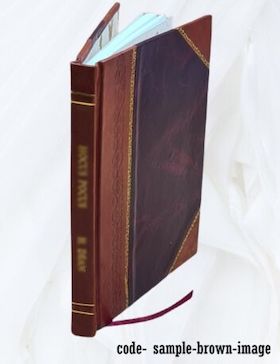
-----
How to Plate Silver onto Glass
Silver is not generally electroplated onto glass; rather, a salt containing silver, such as silver nitrate, is mixed with a reducing agent, causing a chemical reaction which converts the dissolved silver into silver metal. The process is centuries old, but it is possible to generate a dangerously explosive material called silver fulminate -- so knowing what you are doing is important.
Readers who are actually interested in electroplating onto glass may prefer to start with thread 402/28.
Q. I have been having problems plating silver on glass. I am using two solutions I found in a book. Solution A is composed of ammonium hydroxide and silver nitrate. Solution B is water and hydrazine sulphate. When I place the glass in the two solutions some silver plates out but the quality is poor (no shine) and the adhesion is very poor.
I have tried cleaning the glass with ammonium hydroxide and drying. I have also tried lightly etching the glass in a strong solution of sodium hydroxide. I also tried heating the glass. So far, I have been unsuccessful. I do not want to use the "formaldehyde" process because I am nervous about fulminating silver which is one of the by-products. Can anyone help me?
1996
A. You are already using "fulminate of silver" if you made a solution of silver nitrate and ammonia. The hazard only exists when the solution dries out. The dry crystals are very unstable, from what I've read. However I have no direct experience.
Moving on to applying silver to glass: The reaction between silver fulminate solution and a reducing agent is widely used to coat a lot of items with silver. My company buys a commercially available system that works great. We coat wax shapes with silver this way, then plate copper on top. The trick is to apply it from a two headed spray gun. The silver comes out of one nozzle and the reducer out of the other and you place the item to be silvered where the sprays meet.
Bill Vins in hot humid Mesa (What a place-a) Arizona

Bill Vins
microwave & cable assemblies - Mesa (what a place-a), Arizona
|
!! I know a person who has lost an eye because he allowed drying out a solution containing silver nitrate and ammonia. Be careful! Miguel Flesia- Argentina !! An amplification of caution written by other respondents: Use extreme caution as these silver fulminates are extremely unstable when dry or almost dry. They are extremely explosive and all due caution must be used. 
Ed Budman [dec] - Pennsylvania With deep sadness we advise that our good friend Ed passed away Nov. 24, 2018 2000 |
A. To plate silver onto glass, you need to try vacuum deposition. The item to be coated is placed into a vacuum chamber, and metallic silver is vaporized within the chamber. A fine, shiny, tenacious layer of silver will deposit itself onto any glass item within a few inches of the silver. This is how mirrors are coated for lasers and telescopes. I suggest that you try any local college physics or astronomy department to see if they have a sputter coater.
Franklin Roberts- Austin, Texas
A. In my country a lot of copper (then silver) is plated on glass for decorative parts. It is done by using a conductive paint. It is a very simple procedure.

Sara Michaeli
Tel-Aviv-Yafo, Israel
A. You use a wrong method; the right is the use of glucose+NH3+AgNO3+NaOH. This method will give you best result.
Maher Shaker Afifi- Cairo, Egypt
2001
A. Ammoniacal Silver Nitrate Solution
20 drops Sodium hydroxide, 10%
- 20 ml Silver nitrate, 5%
- a few drops ammonia water, 50%
- 30-40 ml Distilled water
NOTE: All glassware should be chemically clean. This solution must always be freshly prepared. Add 20 drops of sodium hydroxide to 20 ml of silver nitrate. Add 50% ammonia water drop by drop until there is a layer of granules left on the bottom of the cylinder. The ammonia water should be fresh and only a minimal amount used. Add distilled water to make 60 ml. Prepare just before use.
1% Periodic Acid
1.0 g Periodic acid
100.0 ml Distilled water
2% Silver Nitrate
2.0 g Silver nitrate
100.0 ml Distilled water
Formalin Solution
30.0 ml Stock formalin
70.0 ml Distilled water
0.2% Gold Chloride
10. 0 ml Gold chloride, 1%
40.0 ml Distilled water
5% sodium thiosulphate
⇦ on
eBay
or
Amazon [affil link]
5.0g Sodium thiosulphate 100.0ml Distilled water
STAINING PROCEDURE:
NOTE: It is absolutely essential that all glassware be acid cleaned with concentrated nitric acid and rinsed in several changes of chlorine-free water:
1. Heat slides on 60°C to 80°C hot plate for 10 minutes.
2. Cool.
3. Treat in periodic acid for 15 minutes.
4. Rinse in distilled water.
5. Stain in silver nitrate for 30 minutes.
6. Rinse in distilled water.
If sections appear to loosen, blow dry and refix on hot plate. If sections loosen later, refix longer.
7. Stain in ammoniacal silver nitrate for 15 minutes.
8. Rinse quickly in distilled water.
9. Fix in formalin solution for 5 minutes.
Wash in distilled water for 3 changes. Tone in gold chloride for 2-5 minutes. Wash in distilled water. Bleach in sodium thiosulphate for 5 minutes. Wash in distilled water for 10 minutes. Blow dry. Mount.

Mitri Maalouf
- Lebanon
2003
A. You may want to try my method ... wash with dish soap and distilled water then spray on diluted Stannous chloride, to "tin" the object; this gives the silver something to stick to. You can make your own simply by putting a piece of 80%(+) tin solder in a jar of muriatic acid (pint?)let it set for a week then strain with a coffee filter and funnel into another plastic container. Seal tight, buy a gallon of distilled water, splash some off the top and add about 1/4 cup of the stannous chloride to the water. Fill a spray bottle with solution and spray object to be silvered. Wait 30 seconds, now rinse with distilled water and apply your silver nitrate and reducer. If the distilled water does not sheet well or pits when rinsing add 2 caps of alcohol to the a quart of distilled water and rinse with that. Then apply silver. Good luck
Ken BarnettThe Studio of Hope Corporation - Albuquerque, New Mexico
May 25, 2014
Q. I HAVE TO SILVER THE GLASS CAVITY USED IN ND:YAG LASER. I HAVE USED THE CHEMICAL PROCESS USING SILVER NITRATE. BUT RESULT IS NOT GREAT. COATING IS WEAK AND NOT BRIGHT. ANYONE HAVE ALTERNATE GOOD PROCESS?
naresh patelnilam laser - India
2001
Q. I am trying to silver plate glass bottles as an art installation. Is a simple application? and is it expensive?
Tobi Wong- NYC, New York
2001
Q. How to activate Wax by spraying silver nitrate ⇦ on eBay or Amazon [affil link] and ammonia ⇦ on eBay or Amazon [affil link] or hydrazine?
Ali rezat- tabriz,iran
March 16, 2016
? Hi cousin Ali. Mitri & Ken and others have already offered their help on that. Please explain in what way your issue differs, so we can move on to more detailed suggestions for your situation.
You're treating wax rather than glass, but is this a sculpture made of high temperature wax, that you will next be clearcoating for a "chrome" look (if so, you probably need a base coat first), or is it just a temporary mandrel for an electroform? (If so, why this approach instead of conductive paint as Sara suggests?) After the wax has been metallized, are you done, or will you be electroplating on it, or applying mirror blackening paint? Is it a one-off effort of a hobbyist, or a high-production situation such as making audio records? For the best answers, please try to make your question longer than the responses you want :-) Thanks!
Luck & Regards,

Ted Mooney, P.E. RET
Striving to live Aloha
finishing.com - Pine Beach, New Jersey
Ted is available for instant help
or longer-term assistance.
Q. Hi
I make sculptures with silver and gold electroforming. Use to activate the wax surface of silver nitrate and hydrazine spray. As Best Supporting creates quality.
That's why I need to know exact terms and substances and other substances that I should [use for] this method.
thanks
- tabriz,iran
A. Ken Barnett is right. You can silver a glass surface without sensitizing or 'tinning' it first, but the silver will not adhere and it will not deposit evenly. Tin sensitizer is essential to silver mirroring.
To get a bright, strong layer of silver, you need to use the right strength of tinning solution. If it is too strong or if you do not rinse it off the glass completely before you apply the silver, it will stain the silver with brown or yellow streaks. If it is too weak, the silver will not adhere properly. A good coat of silver on glass should be difficult but not impossible to rub off with your thumb.
As previously mentioned, fulminating silver is formed when the silver-ammonia solution evaporates. It can't evaporate if you keep the bottle closed-- so put the cap back on the bottle! When you silver the glass, you are mixing the silver solution with a reducer which converts the ammonia-silver nitrate solution into pure elemental silver. Elemental silver does not explode.
Broadview Illinois USA
October 23, 2018
Q, A, or Comment on THIS thread -or- Start a NEW Thread
